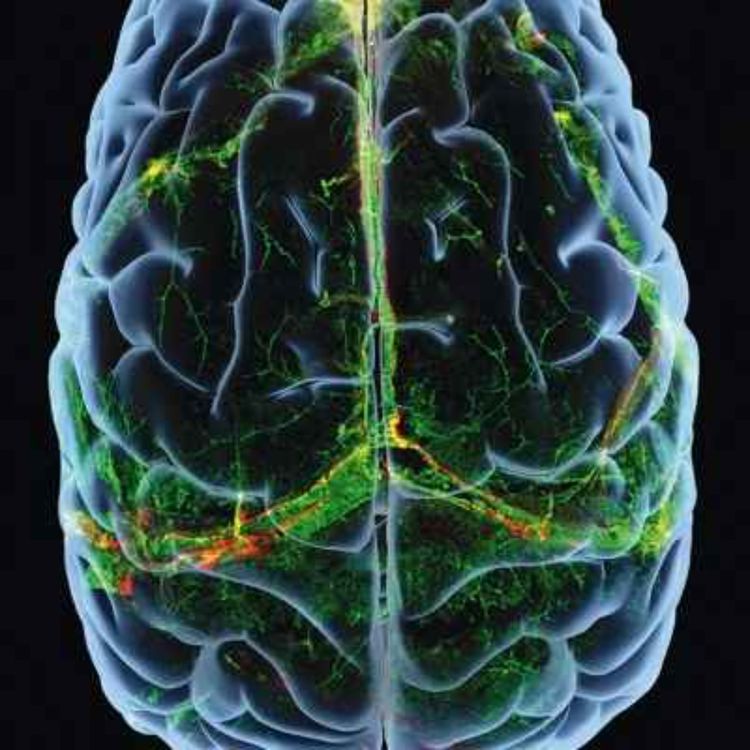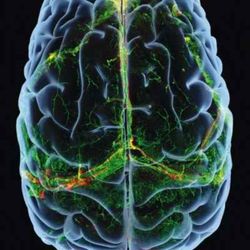Share

NPP BrainPod
Evolution of prefrontal cortex
In the past, there had been a school of thought that looked at evolution linearly — that is, you could in theory draw a line among mammals as they evolved, and so, say, rodent brains would basically be less evolved primate brains. That turns out not to be true; evolution is much more like a branching tree, and each branch then goes on to develop independently, sometimes in parallel. Some groups of animals such as primates can evolve features of their brains that other groups simply don’t have. And now, with advanced DNA sequencing, scientists have been able to determine which groups of mammals are more closely related than others, and so they’ve figured out that, for instance, tree shrews and flying lemurs are more closely related to primates than rodents are. Here, we speak with Dr. Todd M. Preuss, professor of pathology at Emory University and an associate research professor at the Yerkes National Primate Research Center. Dr. Preuss is co-author with Steven Wise of a review article in Neuropsychopharmacology called “Evolution of prefrontal cortex.” Listen in!
More episodes
View all episodes

Endocannabinoid contributions to the perception of socially relevant, affective touch in humans
09:13|New drugs that target the endocannabinoid system are being proposed for disorders that are usually characterized by the dysregulation of social processing, like social anxiety disorder and autism spectrum disorder. Researchers have been trying to understand the mechanisms for how these drugs work. Leah Mayo is assistant professor at the University of Calgary, and she’s one of the authors of a new study in the journal Neuropsychopharmacology in which they examined two aspects of the system. One is the endocannabinoid system itself. And then there’s another aspect of social processing called the C tactile system. Read the full study here: Endocannabinoid contributions to the perception of socially relevant, affective touch in humans | Neuropsychopharmacology
Sex differences in sensitivity to dopamine receptor manipulations of risk-based decision making in rats
09:46|The scientific literature has shown that females demonstrate more aversion to risk-taking than males. Studies have also demonstrated that the basal lateral amygdala, or BLA, is a critical hub for processing risk and reward information. And yet further research has shown that activity in the amygdala differs between males and females, and that the expression of particular dopamine receptors called D2 receptors are greater in females than in males. The authors hypothesized that one mediating mechanism that leads to greater risk aversion in females is differential activity of dopamine in the basal lateral amygdala. Caitlin Orsini is an assistant professor in the departments of psychology and neurology at UT Austin.
Biomarker development for menstrual Cycle affective change: the need for greater temporal, mechanistic, and phenotypic specificity.
09:39|The menstrual cycle is known to affect things like mood and changes in pain. But there can also be symptoms that have a serious impact on a person’s function, ability to work, ability to maintain friendships and romantic relationships. This is a rare condition known as premenstrual dysphoric disorder. But it’s not the only psychiatric condition that can worsen with changes in the menstrual cycle. For instance, nearly 60 percent of menstruating patients with depression can experience cyclical worsening similar to PMDD. Conditions such as these are generally referred to as menstrual cycle affective change. Menstrual cycle affective change is more common in those with chronic psychiatric disorders. The authors are interested in reframing the conversation around menstrual cycle affective change to be something that is a more fundamental process that we can study across disorders, across categories, and identify biomarkers that might help us predict who's going to have those symptoms in more complex ways than we might be able to do with categories. This paper represents how can we take this dimensional way of thinking about menstrual cycle affective change and talk about the specific ways that we can be precise in looking at the time the time characteristics of that, the specific mechanisms, et cetera. Tory Eisenlohr-Moul is an associate professor of psychiatry at the University of Illinois at Chicago in the department of psychiatry, and she’s one of the authors. Jordan Barone is an MD/PhD candidate at the University of Illinois at Chicago, and she’s another author.
Genome-wide association studies of coffee intake in UK/US participants of European ancestry uncover cohort-specific genetic associations
09:39|Researchers are interested in understanding the biology of why some people are more likely to overconsume substances. Some substances are difficult to study—people might not admit to illegal substance abuse or to how much alcohol they drink. But Americans are more likely to accurately recall and share how much coffee they drink—which is related to how much caffeine they consume. And so a team of researchers paired up with the company 23 and Me to try to understand genetic differences among a large set of people, to try to tease out any genetic similarities that could be correlated with coffee consumption. Sandra Sanchez-Roige is an associate professor in the department of psychiatry at the University of California San Diego, and she’s one of the study’s authors. Abraham Palmer is a professor and vice chair of basic research in the department of psychiatry at UC San Diego, and he’s another of the study’s authors. Read their full study here: https://www.nature.com/articles/s41386-024-01870-x
C-reactive protein moderates associations between racial discrimination and ventromedial prefrontal cortex activation during attention to threat in Black American women
09:56|Scientists have been amassing an increasing amount of evidence about the impact of racial discrimination and racial trauma, including how it can have an impact on brain regions involved with threat vigilance and emotional regulation. At the same time, there’s evidence that increased engagement in those areas has been linked to increased risk of mental health problems like depression, and they also suspect it could be a vulnerability for brain health issues such as dementia and Alzheimer’s disease. Negar Fani is an associate professor in the department of psychiatry and behavioral sciences at Emory University School of Medicine, and she worked with Aziz Elbasheir, a PhD candidate at Emory University in the neuroscience program, on the study. They knew that C-reactive proteins, or CRPs, are a marker of immune activation in the blood.Read their full study here: https://www.nature.com/articles/s41386-023-01737-7
Ghrelin decreases sensitivity to negative feedback and increases prediction-error related caudate activity in humans, a randomized controlled trial
09:06|There’s a hormone called ghrelin that’s secreted in the stomach, and when someone is hungry it contributes to that feeling of hunger and the need to search for food. But neurological studies have suggested that ghrelin might also play a role in compulsivity and impulsivity, and it might be related to substance use disorders.Rebecca Boeme is an assistant professor at Linkoping University in Sweden. She and her colleagues decided to use human subjects to investigate how ghrelin affects reinforcement learning, basically how ghrelin influences decision making when subjects receive positive and negative feedback —and also how it might actually be affecting the brain. Read the full study here: https://www.nature.com/articles/s41386-024-01821-6
Spotlighting SHAPERS: Sex hormones associated with psychological and endocrine roles
09:08|Dr. Nicole Petersen is an assistant professor in the department of psychiatry and behavioral sciences at UCLA. Her commentary is a new paper in the journal Neuropsychopharmacology, called “Spotlighting SHAPERS: sex hormones associated with psychological and endocrine roles.” Dr. Petersen starts the paper describing an unnamed signaling molecule that can affect the physical structure of the brain and that seems to be related to a wide number of psychological and neurological conditions. Then she reveals that this is estradiol. The point she makes in the paper is that estrogen isn’t the only neuroactive substance that affects the brain in ways that we just don’t understand.Read the full study here: https://www.nature.com/articles/s41386-024-01819-0
Comparable roles for serotonin in rats and humans for computations underlying flexible decision-making
09:33|Serotonin is a critical chemical when it comes to a number of psychiatric conditions, such as OCD, where it seems to play a particular role in cognitive flexibility. That is, serotonin levels are related to the fact that someone is perseverating on intrusive thoughts or compulsions and isn’t able to be as flexible as otherwise would be necessary.Trevor Robbins, professor of cognitive neuroscience at the University of Cambridge, is one of the authors of a recent study titled Comparable roles for serotonin in rats and humans for computations underlying flexible decision-making, and he says such cognitive flexibility also plays a role in depression and schizophrenia. Read the full study here: https://www.nature.com/articles/s41386-023-01762-6
Integrating public health and translational basic science to address challenges of xylazine adulteration of fentanyl
09:58|The drug naloxone, otherwise known as Narcan, is a critical tool in reversing fentanyl overdoses and reducing mortality. But now fentanyl is appearing on the streets adulterated with a drug called xylazine. Justin Strickland, assistant professor at Johns Hopkins University School of Medicine, and Cassandra Gipson-Reichardt, associate professor in the department of pharmacology nutritional sciences at the University of Kentucky, are the coauthors of a new paper in the journal Neuropsychopharmacology about the importance of integrating public health and translational science to address the challenges of xylazine adulteration of fentanyl. Read the full study here: https://www.nature.com/articles/s41386-023-01680-7